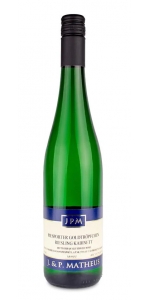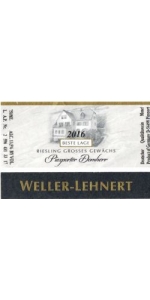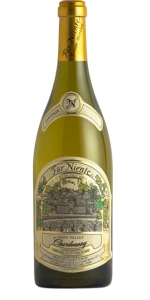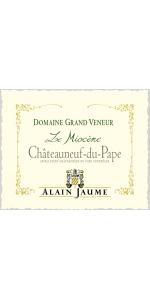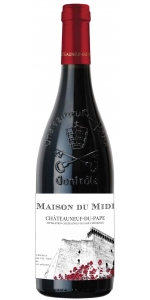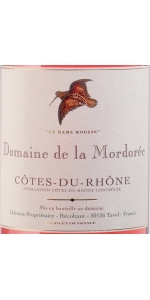Matheus Piesporter Michelsberg QBA 2023
12 bottles with free shipping for: $192.00
| BUY MORE! SAVE MORE! | ||||||||||||||||
|
| Country: | Germany |
| Region: | Mosel |
| Winery: | Weingut Matheus |
| Grape Type: | Riesling |
| Vintage: | 2023 |
| Bottle Size: | 750 ml |
Matheus Piesporter Michelsberg Riesling is made from 100 percent Riesling.
QBA stands for "Qualitätswein bestimmter Anbaugebiete", which means that the wine comes from one of the 13 designated wine regions.
A beautiful wine with delicate perfumed aromas. Medium bodied, well balanced, filled with peaches and green apples, crisp and fresh acidity.
The Weingut Matheus Estate
Weingut Matheus is located in Piesport on the Mosel and has a 400 year tradition of winemaking (8 generations). Since 1992, the estate has been managed by Petra Hain-Matheus and Jorg Matheus, a graduate of the school in Geisenheim. Total estate production is 35,000 bottles or 2,916 cases annually, but they could produce more (50,000 bottles).
The Weingut Matheus Vineyard
Currently, they make wine from 13.6 acres of vineyards located in such sites as:
- Piesporter Goldtröpfchen (4.5 acres)
- Piesporter Treppchen
- Dhroner Hofberger
- Wintricher Ohligsberg
Matheus Piesporter Goldtropfchen Riesling Kabinett is made from 100 percent Riesling.
This Goldtröpfchen ranks as an unofficial "Grand Cru" delivering light floral and fresh Kabinett style wines.
Their later harvest wines, Spatlese and Auslese, tend toward apricot flavors, honeyed notes and superb intensity. All grapes are grown on Devonian slate.
Enjoy with slightly spiced sushi or moderately spicy Indian cuisine such as chicken Vindaloo.
Weller-Lehnert Piesporter Domherr Grosses Gewachs Riesling is made from 100 percent Riesling.
Made in accordance with the stringent production criteria of the classification of the Bernkasteler Ring, wines with the designation “Grosses Gewächs Bernkasteler Ring” represent the premium line of the association’s dry wines. These Grand Crus can only come from the best sites of the steep slopes and are distinguished by their exceptional aging potential. To be awarded the status of “Grosses Gewächs”, selective hand-harvesting, a restriction of yields to 50 hl/ha and the passing of a stringent sensory examination by a highly qualified professional panel are required.
Piesporter Domherr is the ancient and original Piesporter Goldtröpfchen. It lies in the heart of Piesporter Goldtröpfchen right by the Mosel River. It consists of 4 hectares that are south-southeast facing.
The locatio on the river creates a mirror effect, offering optimum conditions for the production of outstanding mineral wine with fine, fruity elegance. Because of its prolonged vegetation period, Riesling (frequently referred to as the “queen of white varieties”) is often capable of expressing the characteristics of its terroir like no other.
The 2023 Far Niente Chardonnay enchants with a bouquet of citrus, white floral, and hints of honeydew melon and nectarine. Its silky texture and bright, refreshing palate dance with flavors of lemon/lime zest and lemon verbena, culminating in a long, juicy finish that leaves the palate yearning for more.
Review:
Pure aromas of lemon confit, poached Asian pears, pastry and lanolin. The palate is medium-bodied with focused acidity and a creamy texture, giving notes of lime curd, orange blossoms, yellow apples and flint. Very well constructed and polished.
-James Suckling 93 Points
Grand Veneur Chateauneuf du Pape Blanc Le Miocene is made from 60% Clairette, 40% Roussanne
Pale yellow colour with hints of green, aromas of white flowers (may blossom, honeysuckle).
The palate is pleasantly balanced between liveliness and roundness, which brings out characteristics of dried apricot, honey and elderberry. A Châteauneuf du Pape white displaying a great finesse.
Best between 1 and 8 years.
Soil type Coming from the single vineyard named “La Fontaine”, the plot is facing north.It is made of clay-sand and limestone. Thanks to the northern orientation, it is always very well aired. This sector allow the Roussane and Clairette to mature in great conditions without losing freshness, which we believe is key point. Winemaking & ageing Whole-bunch pressing. Vinification in stainless-steel tanks. Fermentation temperature controlled at 15°C.
Review:
"The 2023 Châteauneuf du Pape Le Miocene Blanc is mostly Clairette but includes 40% Roussanne. Its vivid gold hue is followed by a beautiful perfume of stone fruits, grilled peach, minty flowers, and some spicy nuances. It's balanced and medium to full-bodied, with a kiss of background oak and flawless balance. It's a brilliant white from this talented family that readers will love to drink over the coming 4-6 years, if not upwards of a decade."
- Jeb Dunnuck (Importer Highlight: Fran Kysela ; July 2024), 93 pts
Maison du Midi Chateauneuf du Pape Rouge is made from 84% Grenache, 11% Syrah and 5% Mourvèdre.
Maison du Midi Chateauneuf-du-Pape is designed to be a very fruity and fresh CDP with structure. Different flavors of red and black fruits with a hint of pepper and spice notes.
Review:
"The 2023 Châteauneuf du Pape comes from the Brotte family (where the fruit is sourced) and is 90% Grenache and 5% each Syrah and Mourvèdre. Already bottled, it has a juicy, upfront, undeniably delicious style that brings both red and black fruits, some peppery, herbes de Provence-like nuances, medium to full body, and an upfront, ready-to-go style."
- Jeb Dunnuck (Importer Highlight: Fran Kysela ; July 2024), 91 pts
Mordoree Cotes du Rhone Dame Rousse Rose is made from 40% Grenache, 35% Syrah, 15% Cinsault, 5% Carignan, 5% Mourvèdre
Color : rosé, slightly orange (mordorée colour).
Aromas : crystallized oranges and cherries, slightly aniseed.
Palate : very rounded, fresh and long finish.
Ageing potential : 2 to 3 years
Surface : 14 Ha. Yield : 45 Hl./Ha. Vineyard age : 20 years Terroir : clay / chalk,clay / limestone and sandy with pebble stones. Harvest : by hand. Vinification : vat bleeding, temperature control. Estate bottled.
Food pairing: cold meats and delicatessen, fowl, white meats, grilled lamb with Provence herbs, fish soup, fried fish, pastas, pizzas and all Asian dishes.
Review:
"Based on 40% Grenache, 30% Syrah, 15% Cinsault, and the rest Carignan and Mourvèdre, awesome notes of framboise, wild strawberries, exotic spices, and a kiss of pressed flowers all emerge from the 2023 Côtes du Rhône Rosé, a beautifully balanced, medium-bodied rosé that has ample richness and depth. This stunning rosé is up with the best of them."
- Jeb Dunnuck (Importer Highlight: Fran Kysela ; July 2024), 92 pts
- back
Pernot Belicard Puligny Montrachet Premier Cru Perrieres is made from 100 percent Chardonnay.
The grapes come from Puligny Montrachet, from a small parcel of 1.28 acre.
The wine offers an intense and expressive nose of white flowers and stone fruits. A precise and elegant palate, beautiful concentration and a stony mineral character that echoes the typical Puligny Montrachet terroir. Citrus and orchard fruit flavors, a fresh and long finish.
Pair with lobster Soufflé. Grilled mullet fish with hazelnut biscuits and asparagus, Turbot Filet with vegetables …
Ziata Meteor Vineyard Cabernet Sauvignon is made from 100 percent Cabernet Sauvignon.
Bold and intense, this Cabernet Sauvignon from the Meteor Vineyard in Coombsville is full-bodied and berry-driven, with rich spice undertones and a firm structure.
After 20 years of marketing Napa Valley and its wines, Karen Cakebread launched her own project in 2008 with two major goals in mind: to create beautifully structured wines that reflect the vineyards from which they come, and to be involved in every aspect of making the wines.Karen started ZIATA, named in honor of her mother, Mary Annunziata, in 2008 with three varietals: Cabernet Franc, Sauvignon Blanc and Pinot Noir, which she chose for their food-friendly qualities. She hired Anne Vawter, a protégée of Heidi Barrett, as winemaker and sourced grapes from sustainable sources, working closely with the grape growers through the growing season, knowing that efforts made in the vineyard would create better wine than those manipulated in the cellar. Jennifer Williams : I find winemaking to be both an art and a trade—you learn by doing and working the vineyards, ensuring the fruit is the best it can be long before it’s picked is at least half the work of the winemaker.


